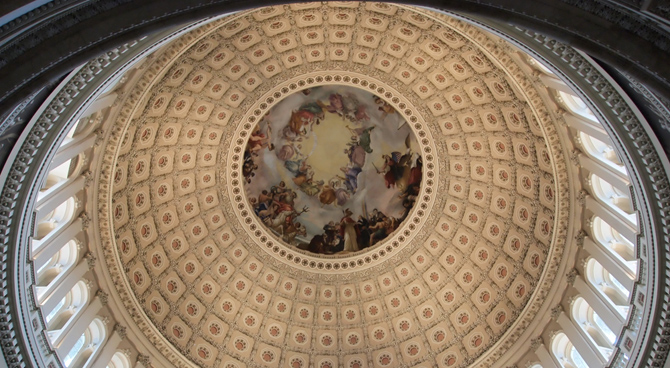Congress eliminated the individual mandate. There’s a way around the other onerous regulations.
By Phil Gramm
March 15, 2018 6:37 pm ET
The tax-reform provision repealing the penalty on those who refuse to participate in ObamaCare has freed millions of Americans to escape a system that exploits them. But while Americans can escape ObamaCare, they still can’t buy insurance in the individual market independent of ObamaCare because private insurers are prohibited from selling it. If this prohibition can be removed through the granting of state waivers by the Department of Health and Human Services, or by the passage of a new federal statute, ObamaCare will collapse into a high-risk insurance pool for the seriously ill rather than become a stepping stone to socialized medicine.
The politics of the ObamaCare debate changed dramatically when the Congressional Budget Office determined that repealing the coverage mandate would save an astonishing $338 billion over 10 years. The saving would come from undisbursed subsidies, as lifting the tax penalty would induce an estimated 4.6 million people to flee from the exchanges. The number of Americans enrolled in ObamaCare plans is projected to plummet to 7.4 million by 2021, a mere 2.2% of the population.
The repeal of the tax penalty will progressively worsen ObamaCare’s risk pool as healthy enrollees who currently pay more into the system than the expected value of their coverage exit the exchanges. Premiums will rise at an accelerating rate for those who stay in the exchanges, forcing Democrats to find new funding or watch the program implode.
There are two ways to restore Americans’ freedom to buy health insurance independent of ObamaCare. First, HHS should grant waivers to states that want to let private insurers offer state-approved plans exempt from ObamaCare’s coverage mandates and rigged risk pool, enabling these states to expand health-care freedom inside their own borders. Second, Congress should amend ObamaCare to permit insurers to sell individual policies outside of the exchanges that are totally independent of ObamaCare regulations, which would dramatically increase the options available to every American.
Idaho is the first state to allow plans that stray from ObamaCare’s coverage mandates, and Blue Cross of Idaho has proposed five “Freedom Blue” plans outside the state exchange. The plans provide coverage similar to what is available on the exchange, but many are listed at about one-third the price because premiums are set to match individual health-risk profiles rather than subsidize the riskiest enrollees. The new plans also boost affordability by offering higher deductibles.
Idaho’s best chance at obtaining the feds’ blessing for its state-approved plans is to make the plans renewable every 12 months. This would allow them to qualify for the limited-duration exemption recently expanded by HHS. In a March 8 letter the administrator of the Centers for Medicare and Medicaid Services told Idaho Gov. Butch Otter : “These state based plans could be legally offered under the PHS [Public Health Service] Act exception for short-term, limited-duration plans.”
Democratic leaders in Congress were quick to recognize that Idaho’s plan to grant health-care freedom to its citizens posed a mortal threat to ObamaCare. Sens. Patty Murray and Ron Wyden were joined by Reps. Frank Pallone and Richard Neal in sending an intimidating letter to the director of Idaho’s Department of Insurance, threatening massive fines and demanding emails and phone records. Since Idaho has shown no sign of backing down, this battle is certain to escalate. Democrats clearly understand that if Idaho is able to market its “Freedom” insurance, as many as 30 Republican-led states will quickly follow its lead. Health-care freedom in Idaho could lead to the de facto end of ObamaCare throughout America.
The Trump administration and Congress are also working to expand health-care freedom nationwide. When the current administration reversed President Obama’s policy of making cost-sharing payments to keep insurance companies in the exchanges, insurers responded by raising the price of their federally subsidized benchmark insurance options. This premium increase on the benchmark policies triggered an automatic increase in the subsidies, all funded by federal taxpayers. State insurance regulators conveniently looked the other way in 2017, but ObamaCare specifically granted the federal government rate-review powers to prevent insurance companies from gaming the system. The benchmark ruse is unlikely to pass HHS scrutiny in 2018.
Before the repeal of the tax penalty, Democrats couldn’t bear the political cost of being seen as dismantling ObamaCare, but they will be forced to act as the program contracts. As healthier families flee the exchanges and premiums spiral, Democrats will be desperate to boost the subsidies. Politically, it will be very difficult for Democrats to deny people who have voluntarily left the exchanges the freedom to buy their own health insurance independent of ObamaCare regulations. Their stubborn reluctance to permit more-flexible plans will provide cover for Republicans to oppose increasing subsidies to the exchanges.
State and federal action to restore health-care freedom would allow new health-care initiatives, such as the partnership among Amazon, Berkshire Hathaway and JPMorgan Chase , to increase innovation in the insurance market. If more than 40% of people enrolled in the exchanges are expected to flee even when the only alternative is to become uninsured, we can expect the number exiting the exchanges to grow substantially when private alternatives are made available. This accelerated exit will reduce ObamaCare to a high-risk insurance pool. At that point the country can have a real debate about how high-risk care should be structured and funded, and whether it should be administered by states or the federal government. Such a program would undoubtedly enjoy stronger bipartisan support than America’s current restrictive health-care law.
Mr. Gramm, a former chairman of the Senate Banking Committee, is a visiting scholar at the American Enterprise Institute.
Appeared in the March 16, 2018, print edition.





